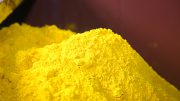This is the first of two parts of a commentary on the verdict in R. v. Felderhof, the Bre-X securities violation case. The second part will appear on August 9.
Judge Peter Hryn acquitted John Felderhof, former vice-president of Bre-X Minerals, on Securities Act charges (four of insider trading and four of misleading disclosure, all in connection with the 1997 salting fraud at the Busang project in Indonesia) on July 31. The disappointment for some people has been acute.
Naturally, shareholders that lost a bag of money on Bre-X wanted a scalp. That attitude is understandable, if unjustified by the evidence. Equally, some instant experts are thundering that Felderhof’s acquittal makes us look like the ungovernable Barbary of the capital markets. What those critics share is a very poor understanding of the charges and the circumstances of the case: consider Ramy Elitzur, a professor in the school of management at the University of Toronto, who was quoted in the <f”PoynterOSTextTwoL-Italic”>Toronto Star<f”PoynterOSTextTwoL-Roman”> as saying, “Somebody robs a bank in this country, they get mandatory jail time. Somebody robs investors, usually of much larger amounts of money, and doesn’t get a thing.”
Well, Felderhof wasn’t a bank robber, and it is not proven that he robbed investors either. And the Royal Canadian Mounted Police commercial crime unit, which abandoned its criminal investigation of Bre-X’s Busang salt fraud in 1999, was almost certainly right that it would never have got a conviction on criminal fraud. There is a reasonable explanation for that: Felderhof might very well be innocent.
That won’t be heard above the baying from the financial columnists, for whom Felderhof’s guilt was an article of religion. But he wasn’t the salter, there is no definite evidence he was a conspirator, and on the last of the issues — the Securities Act offences — he has been acquitted.
He’s not guilty, and not just because Judge Hryn told us so. A securities offence is different from a criminal one, and the charges under Section 122 of the Securities Act require more than just the demonstration that Felderhof did not know about the salting. The Act says, “no person or company is guilty of an offence under (misleading disclosure provisions) if the person or company did not know and in the exercise of reasonable diligence could not have known that the statement was misleading or untrue,” and the charges and the defence both turned on the question of his diligence.
Judge Hryn saw Felderhof exercising the same care as many other people in the industry. That may say more about the industry, as it was in 1997, than it says about Felderhof. But the system is better at policing itself now, and in that — somewhat limited — sense, Felderhof was no worse than the others that missed the fraud. On the specific question of due and reasonable care, the defence was better at proving it than the Ontario Securities Commission at disproving it.
Now for the Damning But.
When you look at the judgment, you find there are a great many facts the Commission did not bring out, many of which bear directly on Judge Hryn’s final opinion. In essence, Judge Hryn says that a great many professionals — and he names some — saw no evil either, and that those who did — the investigators from Strathcona Mineral Services, hired by Bre-X when the salt scam began to appear, and the exploration team from Freeport-McMoRan Copper & Gold, whose twin holes first brought it to public notice — had the benefit of hindsight.
Newsletter writer John Kaiser summed up the defence: “In effect (the defence) used the professional status of all parties which handled data and samples supplied by Bre-X, and their failure to voice any complaints, as an argument that there were no visible red flags.” Judge Hryn, in his decision, frequently takes refuge in the professional repute of those parties when the expert evidence is in conflict. The standing of others that missed the fraud, more than the battle of the expert witnesses, is what won the case for Felderhof.
We know Kilborn Pakar Rekayasa, the engineering firm that did the resource calculations on the Busang gold project, stayed blissfully ignorant of the fraud, partly thanks to their practice of taking Bre-X’s numbers and copy-typing them into their spreadsheets without independently verifying them. We know Normet, Bre-X’s metallurgical consultants, saw nothing unusual in what Freeport’s Colin Jones called “the best description of an alluvial gold grain ever written” or in the curiously large gold grains in Busang samples. And we all know the investment houses and lenders that hung on John Felderhof’s every word back when Busang was going to be the next big thing. Many of us know what we thought, and how we were fooled, and for how long.
The mineral industry has probably got past Busang. There’s much more healthy skepticism now. But it is an education to look at who came well out of the Felderhof case — apart from Felderhof himself — who came out poorly, and who should probably have come out worse.
The professionals
Judge Hryn cites “Kilborn, Normet, Hazen, Oretest, Mintek, Petra Science, Paul Semple, R(oger) Pooley, Roger Townend, John Borner, Anne Thompson, Martha Schwartz, Sophie Ashby, MRDI, Indo Assay, John Irvin, J.P. Morgan, Republic National Bank” as “well-recognized, reputable professionals,” not one of whom “raised a red flag,” with the plain implication that any of them, seeing evidence of tampering, would have.
We should point out straightaway that Indo Assay and its manager, John Irvin, did not have the task of determining the speciation of the gold. The lab’s job is to measure the amount of gold in the sample it gets, and Irvin, as manager, made sure Indo Assay did that job well. They weren’t looking for signs of tampering and need not have been. We can drop two “well-recognized, reputable professionals” from Judge Hryn’s list right there.
Similarly, petrographic evidence put together by specialist consultants Anne Thompson (of Petra Science), John Borner (of Mintek), Martha Schwartz (of Hazen) and Roger Townend was clear enough. Asked to describe the samples, they did — and Thompson’s study for Petra Science was specific to the wall rock alteration, not the gold mineralization.
Granted, Farquharson gave evidence in cross-examination that he would have expected petrographers to remark on gold grains that didn’t fit with the model of hypogene mineralization. Judge Hryn concluded that their silence was a sign there was nothing abnormal about what the petrographers saw. Perhaps; or perhaps a lot of mineralogists aren’t hot-shot geologists, either. But scratch four more people and two more companies from the list. (Hazen stays on, because it did other test work as well.)
Oretest was a metallurgical sub-consultant to Normet. It did its test work well, with results that were there for Normet and Kilborn to see. Scratch another name.
The “well-recognized, reputable professionals” we are left with — Normet, Hazen (corporately), Semple and Ashby (both of Kilborn), Pooley, MRDI, Morgan and Republic — are two metallurgical consulting firms, two banks hot for a place in the financing, an engineering consultant that had worked extensively for Bre-X and presumably had the inside track for the Busang development contract, a consultant that provided some early resource figures, and a consultant engaged in 1996 to assess Bre-X’s exploration program. Judge Hryn said they “did their test work at a high industry standard” — but there was a fraud going on under every nose on that list, and none of them smelled it. Is that a “high industry standard?” Believe me, if you were being sued, someone would be certain to ask that of you.
Judge Hryn is correct to say Felderhof should not be expected to do better than these specialists, but it is not clear that they, or Felderhof, were doing an adequate job. There is probably case law that shows just what is “adequate,” but it’s not at our fingertips; we have only the definition from R. vs. City of Sault Ste. Marie
of “honest and reasonable.” There is no evidence to impute dishonesty to the Normets and Kilborns, but whether it is reasonable to have missed the evidence can fairly be put up for debate.
Next: Hindsight, and who comes out well.



Be the first to comment on "Commentary: R. vs. Felderhof: an industry post-mortem (August 08, 2007)"